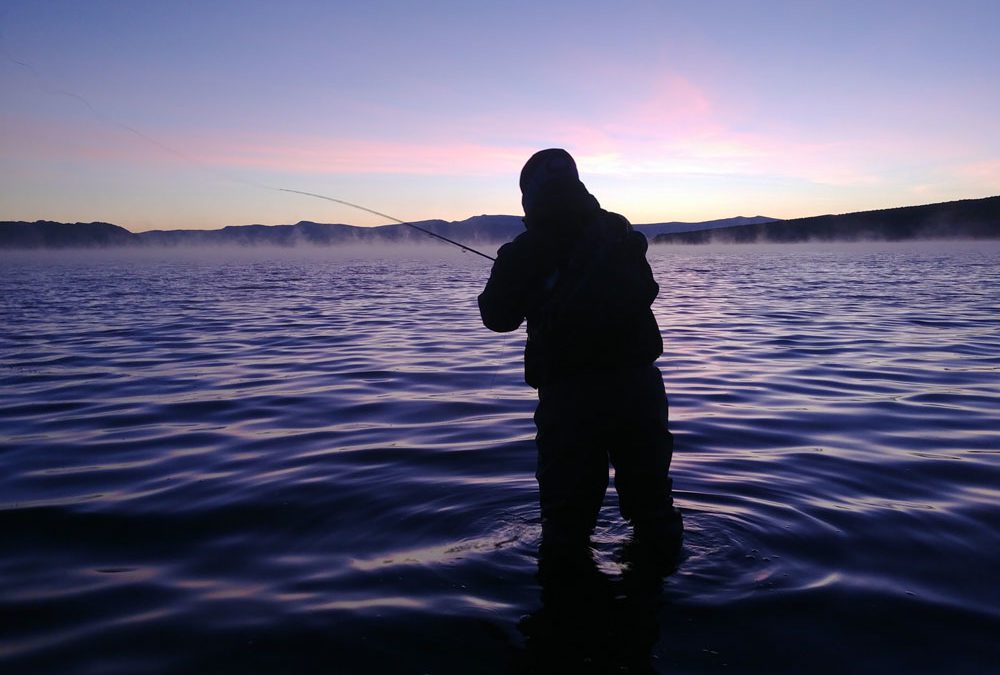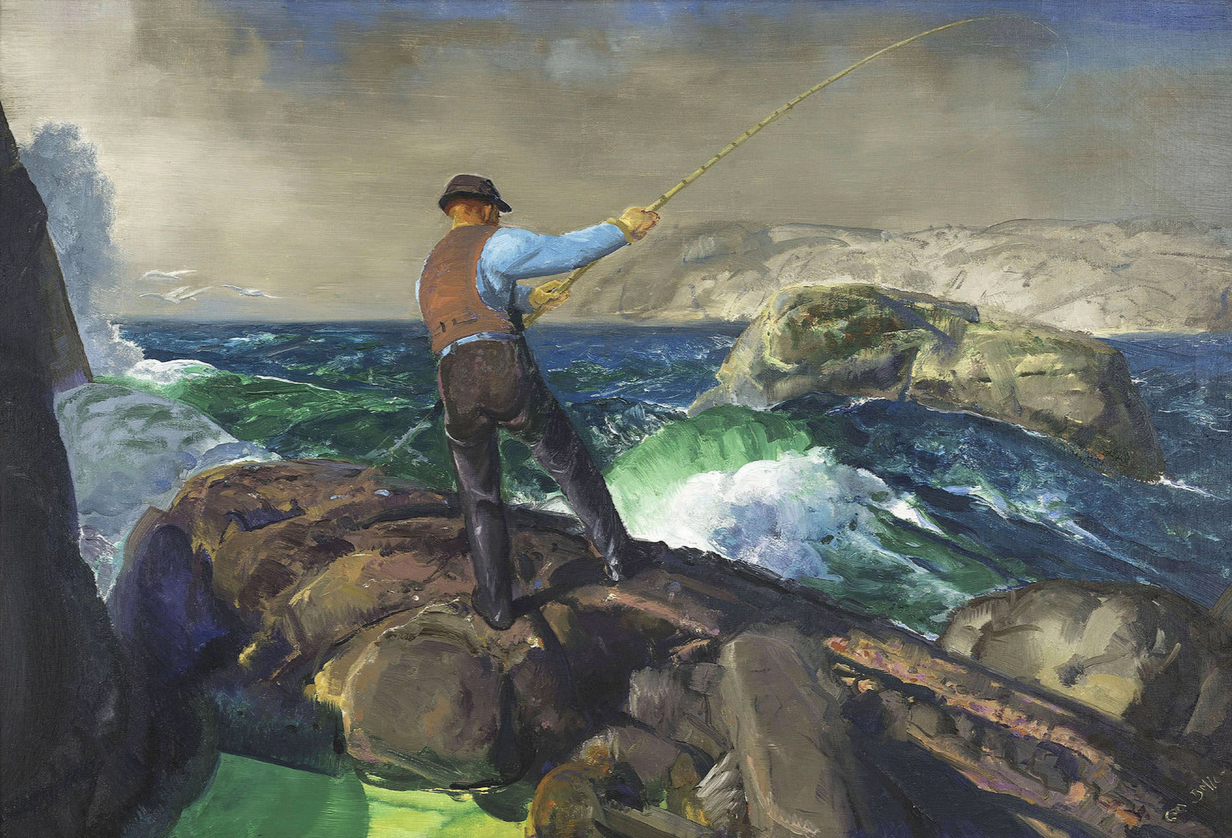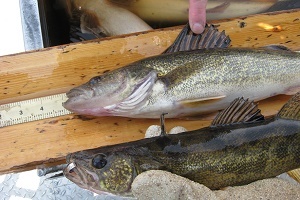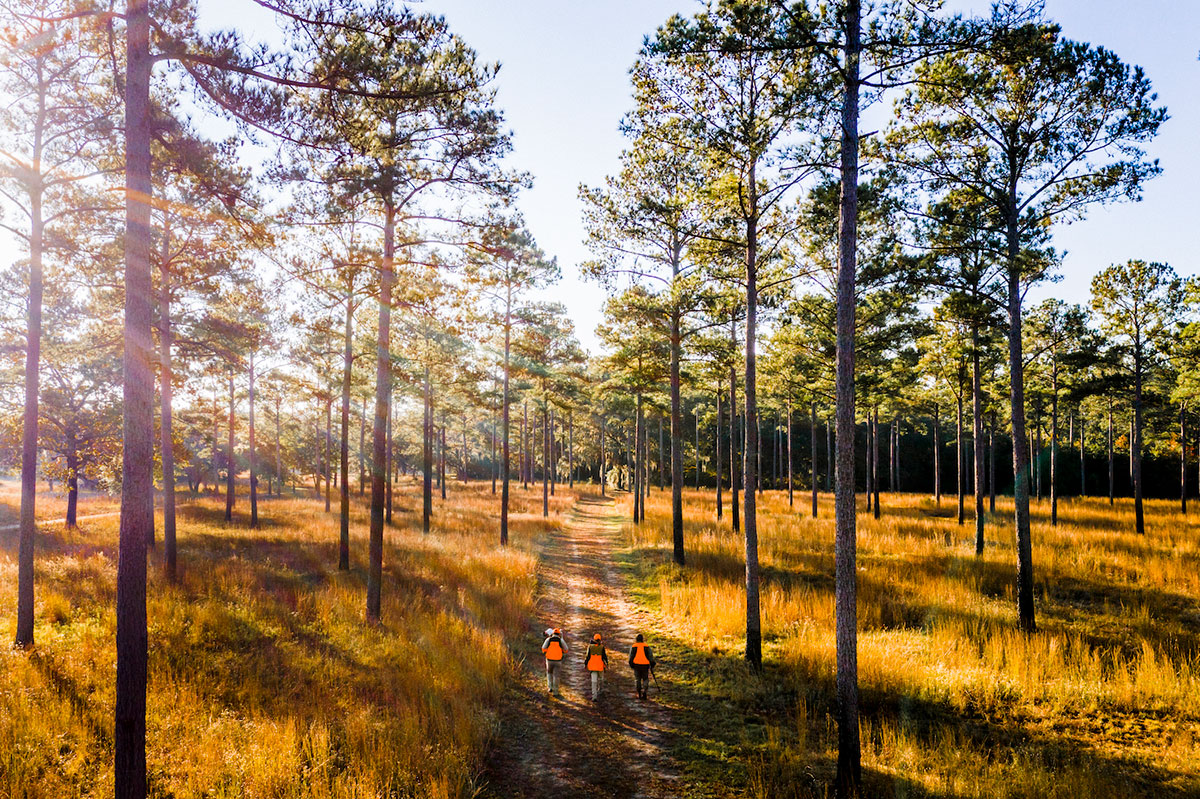Then again, most of fishing is guesswork, even at high noon in the throes of a blue-winged olive hatch. The difference between fishing at night and during the day is like a friend telling you the pretty girl at school or work might like you and hearing that girl say, “Take me out to dinner.” You’re not quite sure what’s going on in either situation, even if you’re watching trout sip blue-winged olive duns with reckless abandon. Trout have a reputation for exceptional pickiness, creating more questions than answers—like whether to go in for the kiss or the hug at the end of the first date.
Tons of questions rolled through my mind as I got my first look at Pyramid Lake. A sliver of an orange moon hung in the sky, teasing me with a better-than-usual nighttime glance at new water. I might’ve driven off the road right into the water if Tim Johnson, the fly fishing artist, hadn’t been along for the ride.
We’d set out from Salt Lake City nine hours prior. We were tired and stiff from sitting in the car but filled with the anxiety of exploring new water. It was well past one in the morning when we figured out how to turn on the heater in our rented trailer, found Tim’s lost set of keys, and triple-checked that we hadn’t forgotten any gear.
I knew I had to get up in four hours to meet our guide on time, but I couldn’t fall asleep right away. I’d dreamt of a trip to Pyramid for years, and I was finally there. Granted, I couldn’t see the lake, and I hadn’t even cast my rod yet, but just being there was worth the nine-hour drive.
Tim and I met our guide exactly four and a half hours later. Ryan Dangerfield is a good buddy of mine who splits his time between guiding Utah’s Green River and Pyramid, and when he invited Tim and I out to fish, we said yes immediately. (Well, I did. Tim was responsible and checked with his wife first. As a single man, I checked that I had enough 15-pound fluorocarbon leader and made some calls to borrow an 8-weight after saying yes).
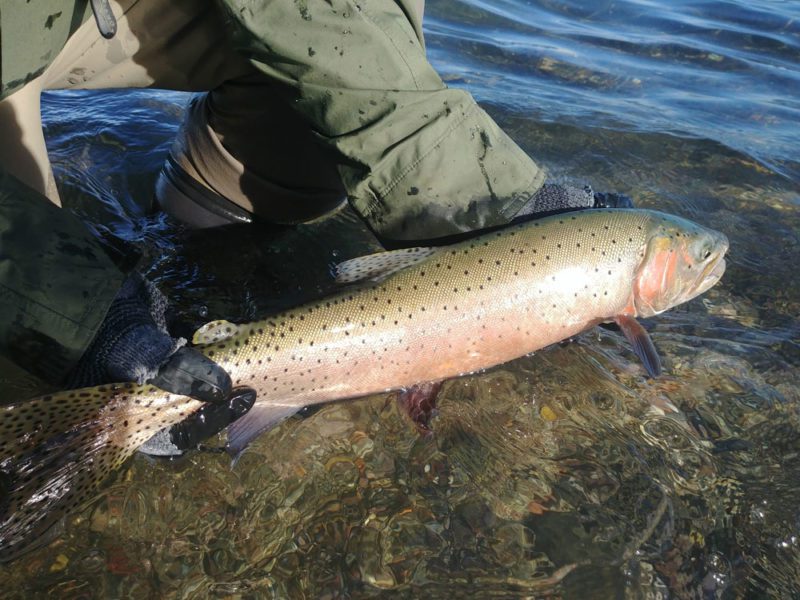
Only at Pyramid Lake is a 21-inch cutthroat viewed as a “dink.”
Ryan directed us to a beach where we rigged up in the frosty glow of headlamps. I kept glancing at the inky black water, reflecting the still sky just before the break of dawn. The fish I’d come for were right there—but I still couldn’t see anything.
I’ve loved cutthroat trout ever since I was old enough to tell them apart from rainbows. Standing on the shores of Pyramid Lake felt like entering a tomb full of the stuff treasure hunters dream about. Years ago, we thought the lake-strain Lahontan cutthroat was extinct; now, they’re very much alive, back in the water that, for years, had been their tomb.
When the first rays of light broke the darkness, I swapped out my streamer stick for one rigged with a balanced leech beneath a bobber. Ryan said the bobber fishing was best in the morning, and I’m never one to turn my nose up at catching big fish.
Sure enough, five minutes later my borrowed 8-weight bent like a horseshoe under the weight of something big.
Then the fish shook its head and the hook popped free. That scenario repeated itself five times until the morning bite died off, and I didn’t feel a fish at all until my final cast of the day. Only at Pyramid Lake is a 21-inch cutthroat viewed as a “dink.”
I released the trout just as the sun started to set and looked back out over the water. It wasn’t hard to look at the lake and imagine it as a tomb; it’d been as still and silent as one for most of the day.
Spencer Durrant is a fly fishing writer, outdoors columnist, and novelist from Utah. His work has appeared in Field & Stream, Hatch Magazine, Sporting Classics Daily, and other national publications. He’s also the managing editor for The Modern Trout Bum. Find him on Twitter/Instagram at @Spencer_Durrant.

